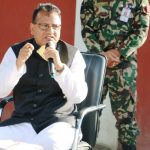By Dr Hemant R Ojha
Is it possible for a state to fail, while communities thrive? The answer is ‘Yes’ – this is at least what you can see now in Nepal. This Himalayan republic is passing through protracted political transition as it fails to write a new constitution, as promised by the national political leaders. Reports say the country is failing, evidencing the political deadlock at the national level. But how do we interpret the state failure when local communities are doing extremely well, in businesses ranging from conserving forest through running a community school to constructing a village road? Politicians fighting incessantly for power in the capital city of Kathmandu causing the state to fail. But theories of state failure also fails to take into account local successes: people at local level crafting rules, cultivating visions and forging collective actions to improve lives, transform institutions, and protect the environment.
National failure
Nepal has gone through a long history of political upheavals for democratic reforms, resisting the centralised, monarchy led regimes of governance. Perhaps the most violent of these is the Maoist war against the state in the decade 1996-2006, which left 12000 dead. After the successful peace negotiations in 2006, the Maoists entered the mainstream politics. Since then, both Maoists and other major parties are engaged in what is regarded as the politics of transition, ostensibly to restructure Nepal as federal democratic republic. Entangled in a number of issues from army integration to defining federal states, the peace process is moving through the period of uncertainty and protracted transition, creating the condition of what some regard as the ‘state failure’.
Local success
But the reality at local level is different. You will find scores of success stories at this level. Everywhere from the high Himalayas to the low-lying flat land, local communities have organised themselves to protect forests, watershed, wildlife, and, water and soil in the sloping land. They have at times even run co-operative businesses to generate income and employment at their own locations. American Nobel Laurette Elinor Ostrom made ground breaking discovery of how communities self-organise to monitor, manage, use and conserve natural resources using some of the Nepalese community institutions as case studies.
Since the late 70s, in the wake of Himalayan crisis, international agencies supported the national government to involve local communities in conserving forests. Once given some power, communities formulated rules to control free riders and ensure more sustainable resource management practices. Communities have also mobilised assets to catalyze local innovations and developments. A community forest leader in central district of Nawalparasi says “we have built small houses for the poor members from the incomes we received from selling the excess timber from our community forests”. “Community forestry funds”, he added, “has also been used to support local roads, school and drinking water projects”. But community forestry is being pushed beyond what it can and should do – itself a process driven more from outside than from within the communities. Community based development is often romanticised as panacea, often at the expense of the need to question the functioning of the national government and international regime of aid and political influence.
In any case, the local level dynamics is working and moving the society. On the contrary, a political analyst reports in the national daily called Kantipur that Nepal’s crisis at the national level is only deepening, as political leaders continue to play the self-centric games. The Maoist Party had become the largest as people voted them in 2008, pushing them to Town from the the Jungle from where they waged the civil war. Although popularly elected, the radical leadership failed to play the peaceful political game, and consequently, the the Maoist government collapsed prematurely. Two other major parties also focussed on power, disregarding the agenda of new constitution. In the battle for power among the Maoist and other parties, the first Constituent Assembly (CA) was dissolved in 2011, without delivering the new constitution. Nepalese again had to reluctantly accept the unwanted extension of transitional politics, by participating again in the election to form the new CA in less than four years in 2013. The new CA is also nowhere close to crafting a new constitution that is going to work for the key conflict players.
Leaders looking outside, not inside
Many believe that the role of the two giant neighbours – India and China – is also linked to the crisis of the nation-state in Nepal. While the interests and influence of the distant powers like the USA and Europeans remains more or less the same, the influence of the two giant members has grown tremendously in the recent years. India has remained a closely engaged brother in Nepal’s politics – a role that is highly contested. Several of the political contestations inside the country originated in Nepal as a response to various forms of Indian influence or india-originated political stimuli. China has remained a cautious neighbour, but demonstrating more active interests recently in Nepal’s national politics. As a result, the national politics has become a game in which national players are more and more engaged with the outside players, failing to look inside and below the national level.
Refocusing the analysis
Clearly, the national politics is failing, at least to organise itself in a democratic way, and then to offer an enabling environment to local politics. Yet, the local politics is thriving, if not improving. For one thing, at the local level, there is more sense of mutual respect and harmony than at the national level, where polities has got dirtier and disrespectful. Indeed, any failure at local level is in most cases attributable to the penetration of national level failures and anomalies. As one columnist wrote sometime ago, “if you see a crumbling road, consider it is the property of national government, but if you see a well-functioning school, consider it of a local community management’.
Given this dilemma, perhaps it is time to consider the nation-state more as local politics than as centralised play of power among the political elites, if we are to achieve improvements in human wellbeing in the context of entrenched social inequality, and achieve sustainable living in the age of increasing environmental risks – such as climate change. One may wonder when political scientists will become more interested in how nation-state emerges through local politics, instead of asking questions about how national politics shape local practices. Understanding the links between the thriving local communities and the failing nation-state could be an important agenda for finding solutions to ‘failing states’ around the world.






